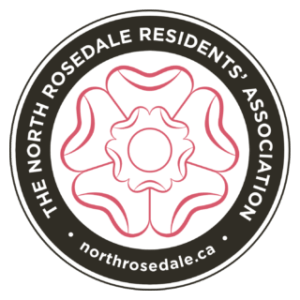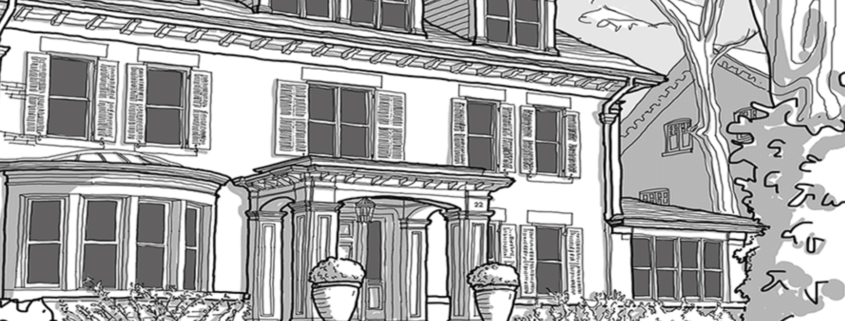Happy Neighbours – Happy Construction
Unhappy Neighbours…Stone Cold Misery….
The buck stops at you! When executing a renovation project on one of your most valuable assets you as the owner are ultimately responsible for any construction project on your land. Below is a brief look at some of the aspects of home construction that can turn into trouble if not executed within the by-laws laid down by the local jurisdiction.
Before I go into my list I want to reiterate what was key in my last column ….. Communication Communication…Communication. The talk that you have with your neighbours before you execute your plans could save you time, money and unnecessary pain. There are horror stories of neighbours taking down hedges/fences they thought were on their property, to find out they were not. Years of litigation and money has never made anyone more neighbourly.
Construction Protection & Safety Guidelines
A safe construction site is important for those working on the site as well as the neighbourhood. A call by a neighbour about unsafe conditions will result in a snap inspection of all working sites on the street. Unless everything is in compliance, especially hard hat and personal protection, the job will be closed until compliance is reached. The by-law officer does not stop at one site if there are many on the street. Several years ago several construction sites were closed down in North Rosedale due to a complaint by a neighbour. The crews had to be sent home until the following day for fear of heavy fines. Ultimately the homeowner is responsible for paying these fines. There are a lot of work sites in Rosedale and people can get fed up. If someone is uncomfortable talking directly to the construction crews they will simply call the City.
Below is from the City’s website
City bylaws, such as the Property Standards and Property Maintenance bylaws regulate many aspects of your site. Noncompliance with these bylaws can result in fines and possibly closing down of your project.
Here is a basic construction site checklist to follow:
- Do not harm existing neighbourhood services. Contact your local utilities to locate underground services before you start digging.
- Protect your neighours’ property, trees and plants. Make sure construction operations and trucks are kept away from your neighbours’ landscaping.
- Put protective boarding or fences around trees and shrubs.
- Enclose your construction site with protective fencing to restrict access (Toronto Municipal Code – Construction Fence Bylaw – Chapter 313).
- If your working near overhead power lines, you must call Toronto Hydro for more information about having your lines de-energized, relocated/removed, or have the lines covered.
- Place portable toilets well away from your neighbours’ homes and out of sight.
- Do not litter your neighbours’ property with garbage bins and debris.
- Respect your neighbours’ parking needs. Do not park any construction vehicles on your front lawn or block neighbours’ driveways.
- Burning construction waste is not permitted.
- Do not leave any potentially dangerous building materials, equipment or vehicles on the site unattended.
- Insist that your workers wear and use proper safety equipment, such as approved hard hats and protective work boots.
Working near Overhead Power Lines
Toronto Hydro requires that you protect your electric lines when construction is happening close by. You must apply and pay Toronto Hydro to come to the site and put protective coverings on the wires from the house out past the construction zone. Failure to do this could be catastrophic. This is a key element from an insurance standpoint. For more information on working near power lines visit Toronto Hydro’s website on Toronto Hydro Electrical Safety.
Cleanliness
It’s good for your project and for the neighbourhood. A poorly kept jobsite will slow the project down, cost you money and will be a hazard. It’s typically the 2nd flat tire that forces a neighbour to call Property Services. Failure to keep your site clean of construction debris may result in fines under City Bylaws. A by-law officer is required to investigate all complaints especially those related to safety. If you have to leave debris out for a short period, protect it and let your neighbours know when it will be removed.
Dumpsters, Construction Bins & Hoarding
If you need to use any portion of the public road to leave a dumpster or large equipment you will need a Street Occupation Permit. This must be obtained before starting a demolition, renovation, or construction project. Blocking off the road can be a nuisance. Keeping your neighbours informed as to when dumpsters will be filled and removed can help smooth things over. It doesn’t hurt to let a close neighbour put a couple of things in the bin to significantly lessen the inconvenience. On the other hand, it’s a pain and an expense when over a weekend the construction bin magically fills up. As usual neighbourliness goes both ways.
Noise Control
This is taken straight from the City website, I couldn’t say it any better…“The Noise Bylaw (Chapter 591, City of Toronto Municipal Code) permits operation of construction equipment ONLY during Monday to Friday 7:00 a.m. to 7:00 p.m., Saturdays 9:00 a.m. to 7:00 p.m., and no construction noise on Sundays and statutory holidays (amending bylaw 505-2006)” From experience I know that the by-law officer will call anyone associated with the permit and give a verbal warning the first time. Fines will be levied for repeated offences.
Boundary Trees
Recent rulings in court with regard to boundary trees make this a prescient subject. Previously there were fence by-laws that allowed neighbours to remove trees along the boundary line without consent. In the past trimming a neighbour’s overhanging branches was not contentious. Now it is imperative that you discuss this with your neighbour. The Ontario Forestry Act stipulates that any tree “whose trunk is growing on the boundary between adjoining lands is the common property of the owners of the adjoining land,” but doesn’t’ specify what constitutes a “trunk.”
When dealing with trees on adjacent properties you have the right to maintain your property in a safe condition but you cannot trespass, or damage the tree,
The best case scenario is that you come to an amicable agreement with your neighbours. Otherwise you may have to consult with a lawyer as to your legal rights in the matter of the boundary trees. The act of pruning trees on neighbouring private property affects private property rights and is a civil issue between private property owners. “The Ontario Superior Court verdict created some of the most stringent and detailed law on tree preservation in Canada. Cutting down a shared tree or chopping at wayward branches without a neighbour’s approval could now be a criminal act, punishable under the provincial Forestry Act.”
Taken from The Globe and Mail article “One tree, two neighbours – and a changed legal landscape” Justin Giovannetti – Published Wednesday, Jun. 19 2013, 11:22 PM EDT
Private Tree Permits
All trees larger than 30 cm in diameter as measured at 1.4 m above ground level are covered by the private tree by-law. A permit to injure or destroy a tree is required for any construction within the tree protection zone. An arborist is required to provide a report on the status of the trees affected. Depending on where the tree is located you will be required to get permits from Urban Forestry,Toronto Ravine Conservation Authority or both. There is an online interactive map to show if TRCA has jurisdiction. This permit process can be quite long will effect when you are able to obtain a permit for construction. Be sure to check this out early in your design process so that it does not slow down your permit process.
Right-of-Entry Permit
During construction there are times when you may be required to have access to a neighbouring property. If you can get your neighbour to agree to this access then a permit is not needed. If your neighbour will not agree then a Right of Entry Permit must be obtained. Health and safety are the main issues in applying for the permit. Access should only occur at reasonable times and only to the extent necessary to finish the required work. Notice must be given to your neighbour. The effected land must be returned to its original condition and compensation must be provided for any damages.




Leave a Reply
Want to join the discussion?Feel free to contribute!